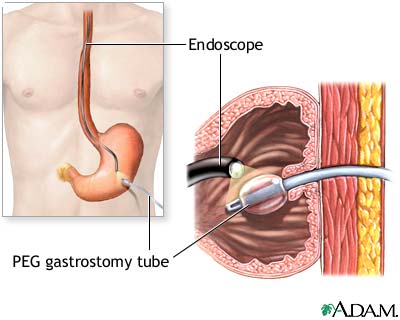
Percutaneous Endoscopic Gastrostomy (PEG): A Patient's Guide
Dr. Ali recognized as one of the best gastroenterologist in Karachi, offers Percutaneous Endoscopic Gastrostomy (PEG) procedure for patients who have difficulty swallowing or cannot get enough nutrition by mouth.
What is Percutaneous Endoscopic Gastrostomy (PEG)?
Percutaneous Endoscopic Gastrostomy (PEG) is a medical procedure that involves the placement of a feeding tube directly into the stomach through the abdominal wall. This is done under endoscopic guidance, which allows the doctor to view the inside of the stomach and ensure accurate placement of the tube.
Why is PEG Performed?
PEG is typically performed for patients who have difficulty swallowing or cannot get enough nutrition by mouth. This can be due to a variety of reasons, including neurological disorders, certain cancers, or severe oral or throat problems. The procedure provides a means to receive adequate nutrition directly into the stomach.
Preparing for a PEG Procedure
Before undergoing a PEG procedure, patients usually undergo a physical examination and various tests to assess their suitability for the procedure. It’s important to inform your doctor about any medications you’re taking, as some might need to be adjusted. Fasting for several hours before the procedure is also common.
The PEG Procedure
During the PEG procedure, you’ll be given a local anesthetic and sedative to minimize discomfort. A flexible endoscope is inserted through the mouth into the stomach. The doctor makes a small incision in the abdomen and places the feeding tube into the stomach, securing it in place. The procedure typically takes about 30-45 minutes.
Post-PEG Procedure Care
After the procedure, you’ll be monitored in a recovery area. It’s normal to experience some soreness at the insertion site. The healthcare team will provide instructions on how to care for the feeding tube and the insertion site. It’s important to follow these instructions to prevent infections and other complications.
Understanding Your Care Plan
Following the PEG procedure, you’ll receive detailed instructions regarding the use and care of the feeding tube, including how to administer feedings and medications through the tube. Regular follow-up appointments are crucial to monitor the site and ensure proper nutrition is being maintained.
